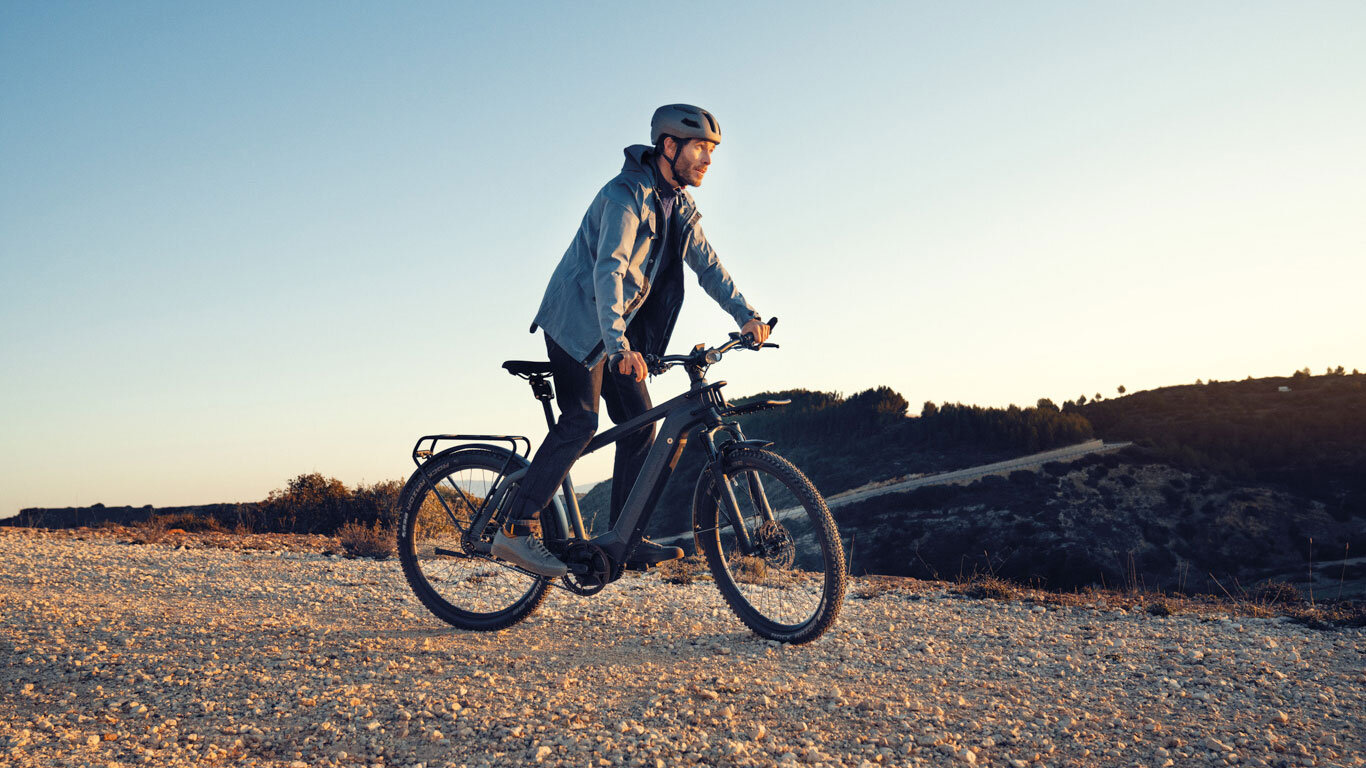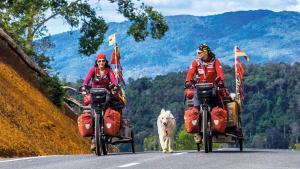Engineered products bearing the claim made in Germany are often heavily burdened by customer expectations when considering quality of workmanship, durability and even a certain amount of prestige. So, when I was introduced to the e-bike manufacturer, Riese & Müller, in Germany, I wanted to exercise some diligence and learn more about the company, its owners and the recipe behind their international success. Adhering to current pandemic restraints, I was unable to visit the head office and factory on this occasion and resorted to an online interview with the knowledgeable and amicable Jörg Matheis, Head of Communication.

BEGINNINGS
Riese & Müller GmbH was registered in 1993 but, as is so often the case, the story begins much earlier. The founders, Markus Riese and Heiko Müller, first crossed paths at the Technical University in Darmstadt where they were studying mechanical engineering. Contrary to most students’ dreams, neither aspired to seeking big-buck employment at one of the industry leaders.
It soon materialised they shared one common interest: bicycles. Not just for sport or recreation, but also as their everyday mode of transport—even today, Markus is reluctant to use a car for journeys less than 30 km.
Even if bikepacking probably wasn’t a term at the time, the two friends planned a tour together. As you might expect from enthusiastic young students, this journey wasn’t about to lead them along the banks of the Rhine or Mosel. Instead, they planned a four-week expedition through the Tunisian desert. Driven by passion for cycling and exploration (in terms of both geography and personal accomplishment), they packed frugally and survived on a diet of oats and water throughout the journey.
Riding through Tunisia was a bonding experience which forged their mutual interest in bicycles and marked the start of an even more incredible journey.
A CASE OF INNOVATION
Several weeks after their return, Markus turned up on Heiko’s doorstep carrying a large suitcase containing what would evolve into Riese & Müller’s first product: the Birdy. A collapsible bicycle with a unique folding mechanism.
Folding bicycles had established themselves as a favourite amongst commuters looking to bridge the gap between their place of work and either public transport or a car parked slightly beyond the borders of the metropole (or today, outside of the congestion zone). Consequently, portability was the characteristic manufacturers endeavoured to satisfy. However, most models shared a common trait: The central frame was a hinged two-piece construction. Whereas this design can allow for manageable dimensions, age-related degradation of the frame’s rigidity combined with alarming speed wobbles were not uncommon. Nevertheless, plans for improvement were neither apparent nor forthcoming.
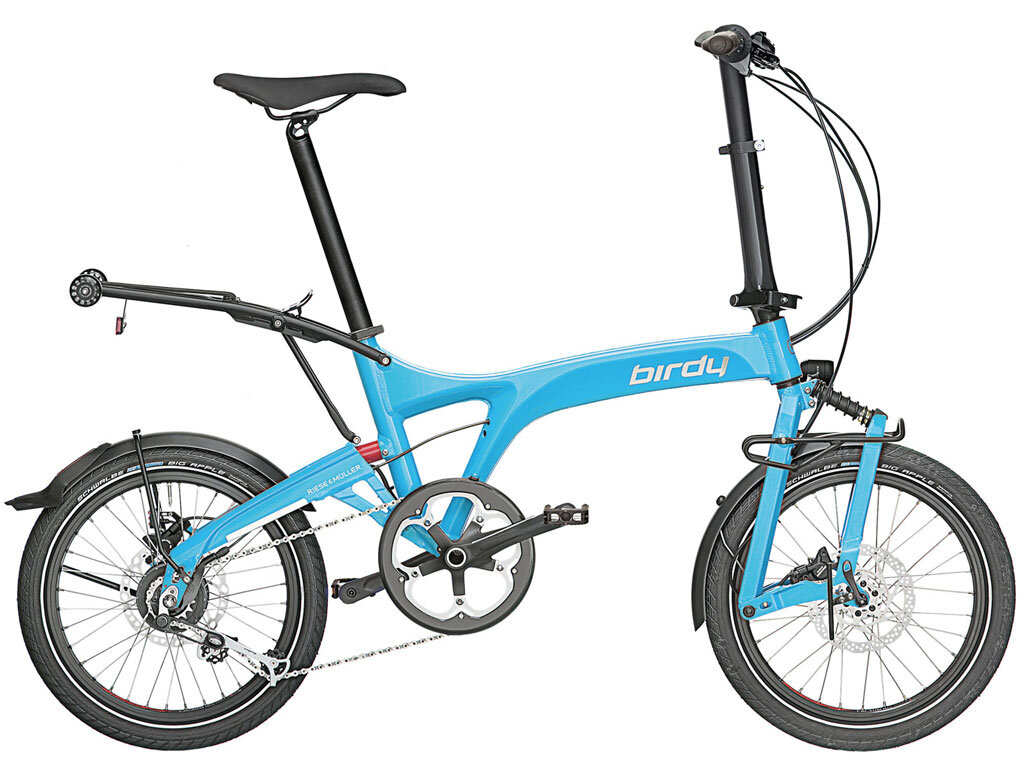
Markus had developed a new collapsible concept which maintained the integrity of the frame and incorporated the folding mechanism into the rotational points of the front and rear suspension. In other words, his innovation now left what should be stiff stiff and facilitated compact portable dimensions by extending the operational radius of something designed to move under normal operational conditions.
After reading an article in the newspaper proclaiming an innovation prize to be awarded to start-ups by the State of Hessen, Heiko suggested entering Markus’ new design. An improved prototype was prepared and successfully presented to the committee whereupon the jury recognised not only the innovative resolve to an existing problem, but also a fresh new approach to portable mobility.
FIRST PUBLIC APPEARANCE
Winning the innovation award provided the necessary drive to establish manufacturing procedures aligned with volume production of a high-quality product. It was time to present Birdy to a broader audience and a booth was booked at the Eurobike—an exhibition with considerable international reach at a time when the internet had yet to play a significant role in marketing and commerce.
During the course of the show, the two entrepreneurs had a particularly fortuitous encounter with George Lin of Pacific Cycle who simply said, “I want to build this bicycle.” The introduction of this new concept was enough to demonstrate its true potential. Pacific Cycle is still a production partner today.
AN ICON IS BORN
Eurobike led to new relationships and considerable interest in Birdy. So much so, in fact, that Markus and Heiko established Riese & Müller GmbH in 1993—a company destined to build high-value, high-quality bicycles. A business model that, at the time, was considered rather risky.
As a comparison, conventional folding bicycles could, at the time, be purchased for between DM 800 and DM 900. The Birdy was set to cost more than twice that. Market researchers may well have avoided eye contact and buried faces in hands, but the two founders were convinced quality was more important than popular opinion. Success, according to Markus and Heiko, was dependent upon setting new manufacturing standards from the outset by using the best components sourced from market-leading suppliers to create a premium product.

Nearly three decades later, the same principles apply and not once in the history of their manufacture has there been any compromise in regard to components or final products. Neither have they at any point entertained the idea of cutting corners to achieve more competitive pricing and increased sales volume.
Premium stands for quality, safety and longevity, whilst representing a long-term investment.
BI-LATERAL RELATIONSHIPS
As previously mentioned, one of their suppliers joined the fold even before the company was founded and is still constituent to the business strategy. Riese & Müller do not pitch for new suppliers annually, but roll out their long-term plans with existing partners. This not only provides commercial security, but also offers potential customers a state-of-the-art product along with the peace of mind that his or her bicycle will remain serviceable for many years to come.
Long-term supplier relations are also key to future product development. Each party benefits from the other’s experience and engineering capabilities.
The intimacy of these relationships has also led Riese & Müller to originate Control Technology which covers the most demanding specification of lighting, tyres and suspension to ensure the highest degree of safety and comfort. Riese & Müller suspension, as an example, must not only smooth the bumps and potholes but also absorb a head-on collision with a kerbstone at 25 or 40 kmh without causing the rider to wrench the handlebars and crash. Equally so, the tyres worn by the Load range of cargo e-bikes have dedicated tread patterns and compounds for improved grip.
CORPORATE MILESTONE
In 2008, the company launched first trials with motorised bicycles and a new range of hybrid bikes. As the product gained popularity over the following years, Riese & Müller was looking for new partners to further promote electromobility.
Bosch launched a new electric motor in 2011, and a stringent testing regime satisfied Riese & Müller’s expectations. On the one hand, Bosch is synonymous for quality and business ethics. On the other, they had invested considerable engineering and financial resources in creating a robust motor designed for longevity. This new partnership was to reshape Riese & Müller’s business strategy.
Heiko put forward a proposal to his partner and their 50 employees: From 2012, the Riese & Müller brand would only produce e-bikes. Focussing on the future of mobility, Heiko explained that e-bikes had a different dynamic compared to their manpowered predecessors—even with the ability to replace cars for commuting and travel.
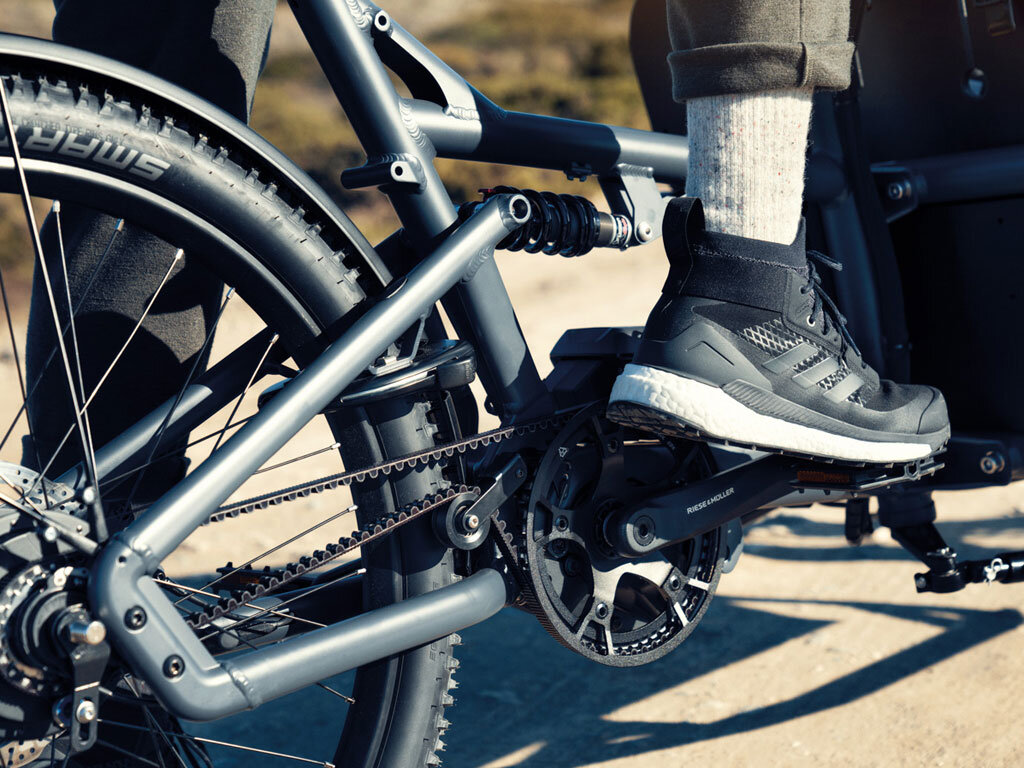
This was a courageous step. Not only was the technology still in its infancy, but electrically powered bicycles were usually considered as typical for the more mature rider. The idea to approach younger generations and even attempt to corner part of the automobile market was indeed a bold decision. The ensuing marketing strategy was successfully implemented to sway customers away from the existing e-bike preconception and toward commuter vehicles and the opportunities of adventure and long-distance travel.
TWO ENGINEERS AND A VISIONARY
Ever since the company’s foundation, the seats at the head of the table had been occupied by Markus and Heiko, both engineers. Markus was primarily in charge of manufacture and development of existing and new products; Heiko had assumed responsibility for operations and day-to-day business. Each stretched to full capacity, their focus was more about the here and now than it was on long-term strategies.
In 2013, Markus put forward the proposal to invite Sandra Wolf to join the management team as brand builder and visionary. With more than 15 years experience running her own consultancy and design agency, Sandra was equipped to take the helm and steer the company into the future.

The combination of the company’s new focus on e-bikes from 2012 and Sandra’s enrolment one year later resulted in remarkable growth: Beginning with just over 5,000 bikes sold in 2012, production soared to a staggering 70,000 units in 2019 at a growth rate of between 40% and 50% per year. During the same period, the number of employees grew eleven-fold to 550 with further expansion planned. Currently, they are building another new production and administration building.
Whilst this is magnificent commercial performance, the real achievement has been attracting an appreciative audience capable of affording a premium-priced product.
Another goal is already in sight: Riese & Müller aims to become the most sustainable company in the e-bike sector by 2025.
SHAPING NEW MARKETS
The gift of going against the grain is etched into an innovators DNA and it’s more than just being broad-minded or thinking outside of the box. When Heiko first launched into the e-bike only era, he could already picture the potential a younger generation offered; travel destinations that were more achievable; more diverse recreational activities; improved commuter mobility; environmental benefits. Not wanting to stop there, Riese & Müller also considered the impact they could have on local businesses. There are several examples, but I have chosen to concentrate on just two for the moment.
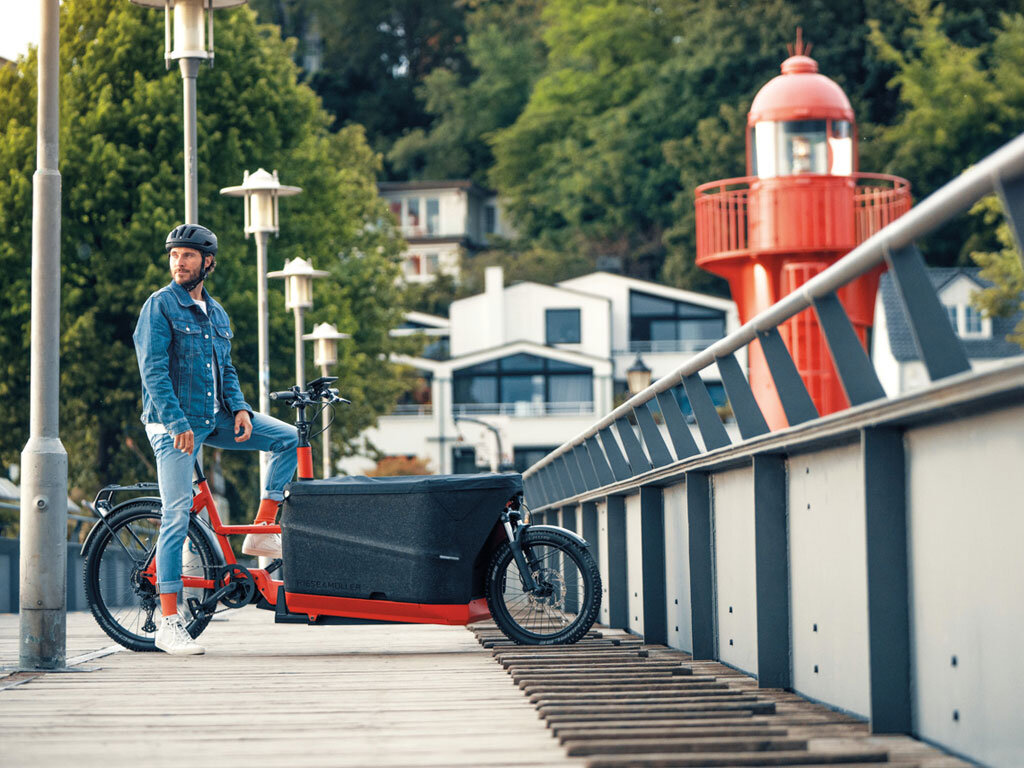
Cargo E-bikes Who else could have conjured up the idea of infiltrating the market for small, local deliveries so efficiently? Especially when you consider that in 2012, when the series was first launched, sales were meagre to say the least and averaged less than one per month. Today, Riese & Müller cargo bikes are among the most popular products on the market.
Unlike Italy, where the tiny three-wheeled Vespa Ape has been an indispensable actor amidst urban and rural landscapes, similar vehicles have failed to become so prolific in other countries. Riese & Müller’s cargo e-bikes and effective marketing ploys have opened up cost-effective, environmentally responsible transportation for small businesses everywhere.
In Switzerland, carvelo2go (an initiative of the Swiss automobile club, TCS) has introduced eCargo-Bike Sharing with a fleet of 350 Packsters. Aimed at businesses and private use, the Packsters are equipped for deliveries, or with child seats, or even with a trailer and camping equipment. carvelo2go chose Riese & Müller solutions based upon their reliability.
Island Mobility In northern Germany, the Frisia Shipping Company has a fleet of around 400 Riese & Müller e-bikes for hire. This means that holiday makers and visitors to the islands in the North Sea can leave their cars in port, take the ferry to the island and use e-bikes as transport. Some islands have been car-free for some time and the trend is quickly spreading to others.
PROOF OF CONCEPT
Adventure travel by bicycle, or bikepacking, is a popular pursuit. But, how does an e-bike really fair as a potential vehicle for extended expeditions? Riese & Müller entered a partnership with one of the most avid cycling couples: Tanja and Denis Katzer (linktr.ee/tanjadeniskatzer). Their expedition (currently interrupted due to COVID-19) began in 1991 and has covered more than 400,000 km to some of the remotest destinations our planet has to offer. They have written several books detailing their adventures, one of which, So weit der Akku reicht [As Far As The Battery Will Go], recounts their 338-day, 8,055 km inspirational journey through Mongolia and China on their e-bikes.
Tanja and Denis were looking for e-bikes that would reliably take them through hell and high water if the need arose. Riese & Müller were looking for a relationship which would provide otherwise difficult to attain real-life endurance test data to improve their own ongoing research and development.
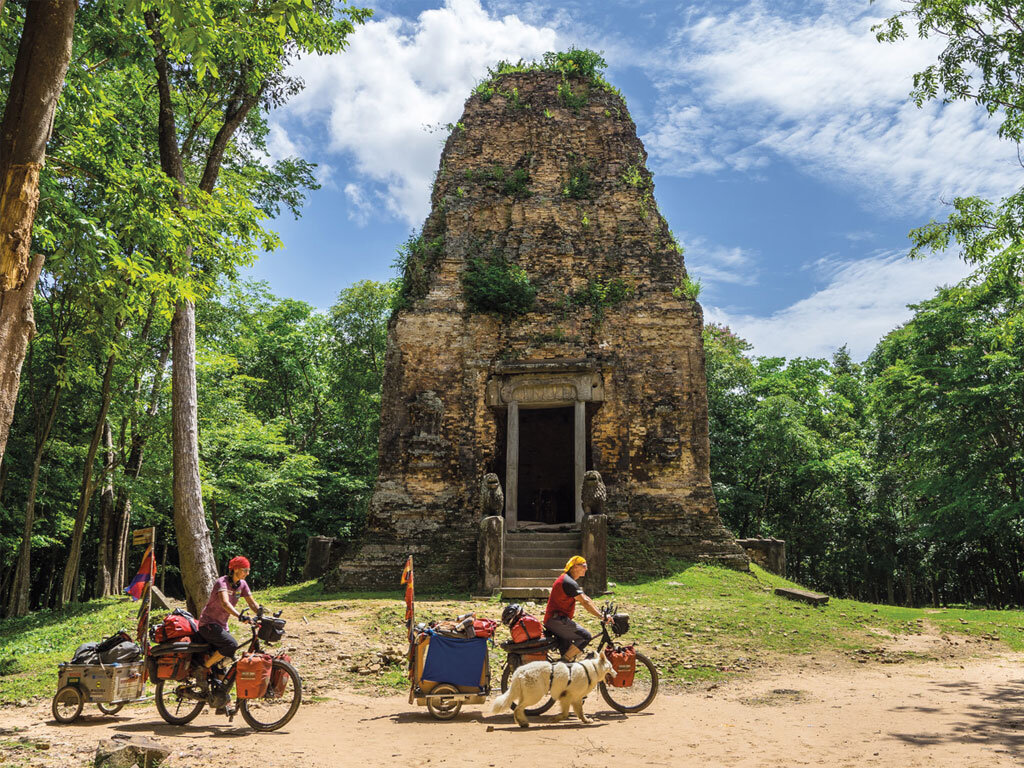
During the expedition, the e-bikes which are fully laden with luggage and provisions also pull trailers, one of which acts as a carriage for Ajaci, the Katzer’s dog. Most recently, the couple spent time in Norway under very different climatic conditions to those they will experience when they return to Asia to pick up the trail where they left off.
CATERING FOR ALL TASTES
Anyone can ride an e-bike. With this in mind, Riese & Müller offer a range spanning 24 different models to choose from. The customer decides the style and colour depending on personal preference and suitability. A look at the website provides full specifications and a range of accessories.

